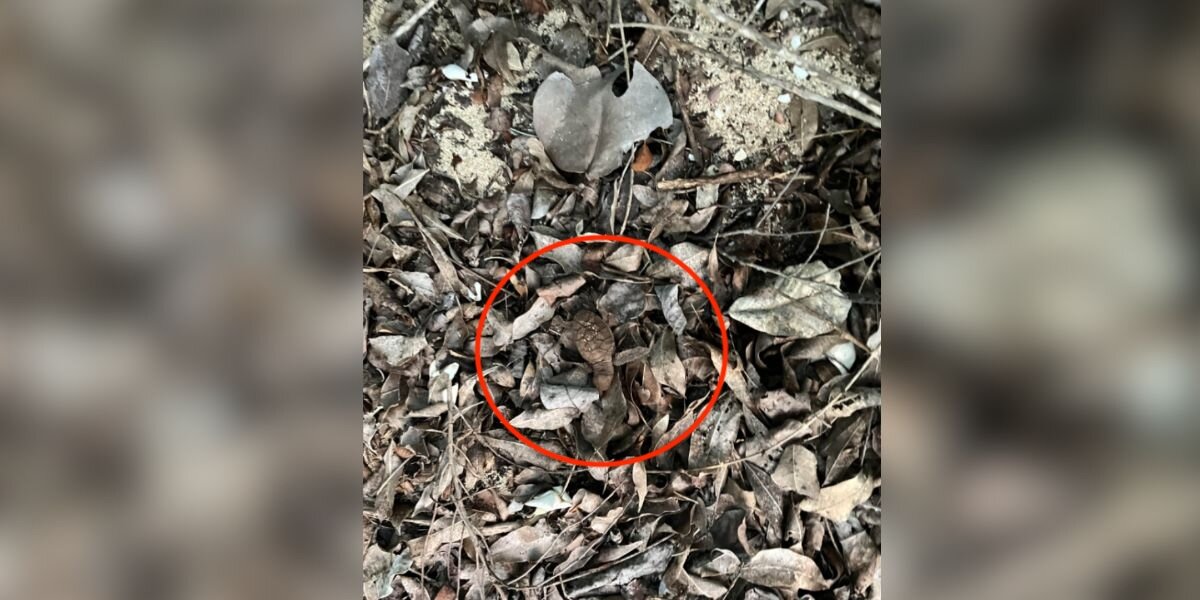A few years ago, Dr. Larry Wood was conducting research on a seashore in the U.S. Virgin Islands when he spotted a little animal moving in the leaves. The baby’s brown shell and deep greenish-gray skin were a perfect camouflage, rendering him almost invisible amongst the natural seaside debris.
 Dr. Larry Wood
Dr. Larry Wood
Wood, who’s the executive director of the National Save The Sea Turtle Foundation, recognized the baby as a hawksbill turtle hatchling — a rare, critically endangered species. The researcher watched in awe as the little turtle paddled out of the leaves, back toward his ocean home.
At the time, Wood was participating in a routine nest check survey, working with local scientists to see how turtles in the area were faring. The animal experts knew to look for hawksbill nests further up on the shore, as this is where these turtles are most likely to lay their eggs.
“Female hawksbill sea turtles typically position their nests high up on the shore, frequently under or among beach vegetation such as trees and grasses,” the National Save The Sea Turtle Foundation wrote in a Facebook post. “This placement provides natural cover and shelter for the nest.”
Hawksbill sea turtles are known for their beautiful shells and distinctive, pointed mouths, which help them dig food out of narrow spaces. The turtles are “spongivores,” meaning their diet consists primarily of sea sponges. Though this food choice may seem strange, hawksbills are uniquely suited for sponge-eating, and their snacking actually plays an important role in the ocean ecosystem.
 Laz Ruda
Laz Ruda
“The digestive systems of adult hawksbills are capable of neutralizing the sharp, glass-like spicules and toxic chemicals found in many sponges they consume,” the foundation wrote in a Facebook post. “This feeding behavior plays a crucial role in maintaining healthy coral reef ecosystems by preventing sponges from overgrowing and suffocating corals, with one turtle estimated to consume over 1,000 pounds of sponges annually.”
Sadly, these beloved turtles are under threat. For years, fishermen hunted the turtles for their shells, which they sold as part of the lucrative global tortoiseshell trade. Now, despite new laws preventing hawksbill hunting, these turtles still struggle to survive.
“Unfortunately, an estimated 90 percent of the world’s hawksbills were lost to the trade,” Wood told The Dodo.
But there’s still hope as scientists like Wood continue to study the turtles and promote preservation efforts. And you don’t need to be an animal scientist to help hawksbills. According to Wood, anyone can aid hawksbill health by avoiding tortoiseshell products, supporting efforts to reduce ocean pollution, supporting the conservation of coral reefs and working to protect nesting beaches and other coastal habitats where the turtles might live.
If everyone does their part, hawksbills won’t have to worry. They can swim through their reefs, snack on their sponges and live in peace.
To help these turtles, you can make a donation to the National Save The Sea Turtle Foundation.  Turtle Cut Free From Six-Pack Rings Is Still Unstoppable 30 Years LaterShe’s reached a new milestone.
Turtle Cut Free From Six-Pack Rings Is Still Unstoppable 30 Years LaterShe’s reached a new milestone.
